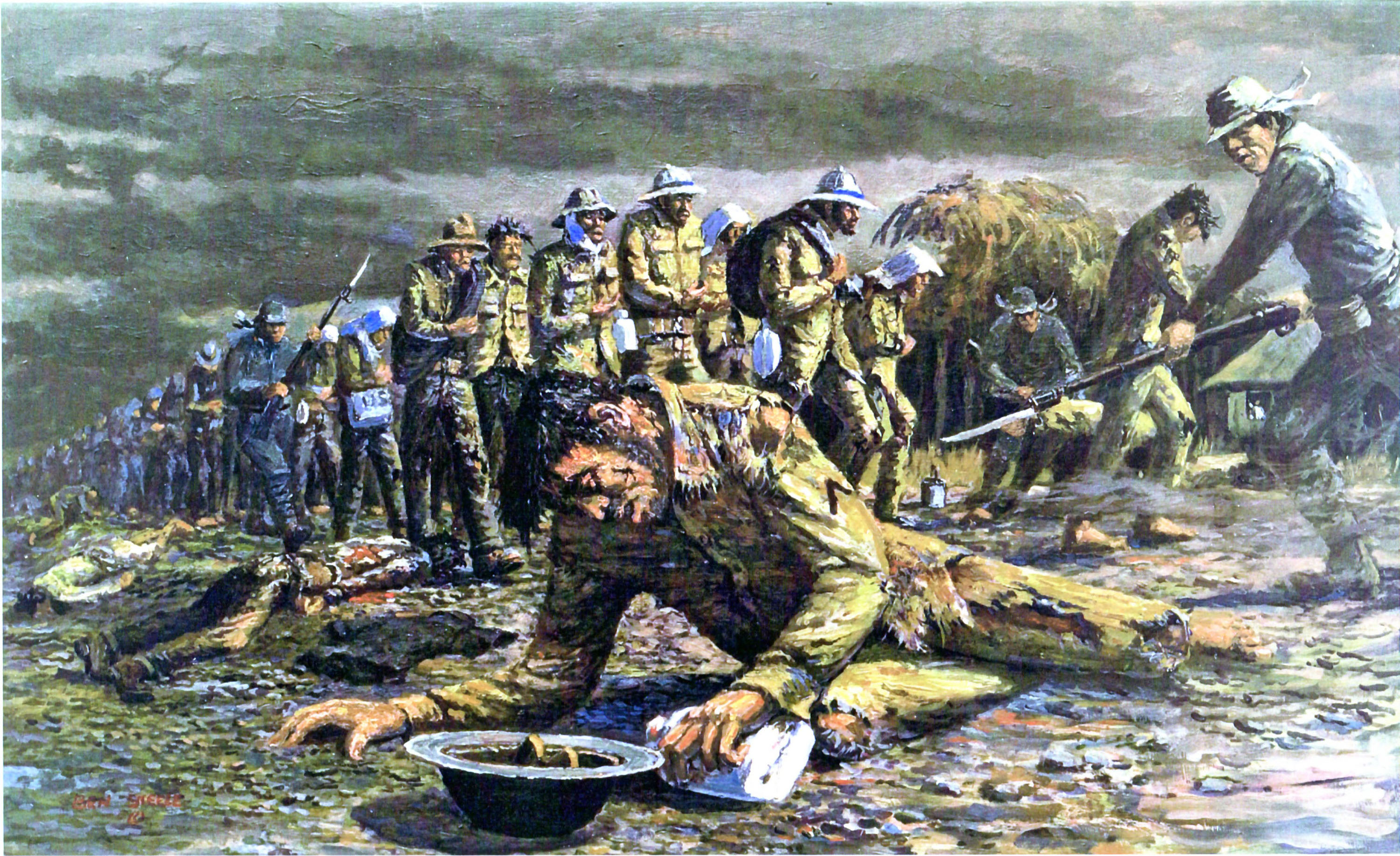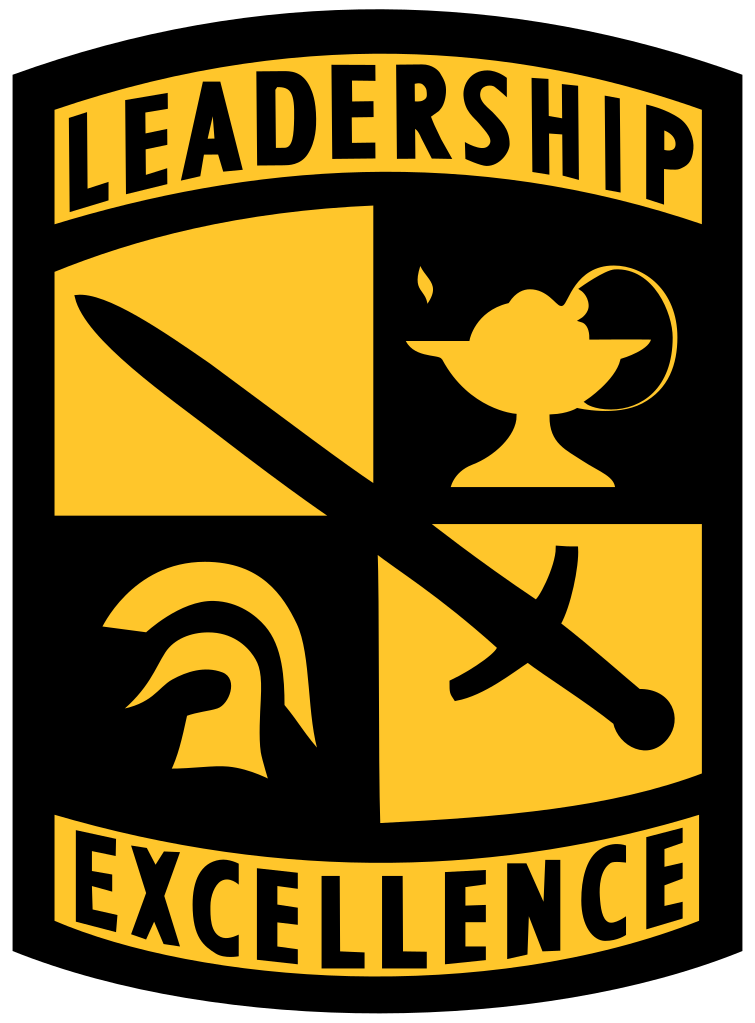History
Under the provisions of the Morrill Act of 1862, the Department of Military Science and Tactics was activated at New Mexico State during the 1902-03 school year. The first PMS& T was Professor Alfred S. Frost, Major, U.S. Army, Retired (former Colonel, 1st South Dakota Infantry) who continued in this capacity until the school year 1904-05.
The original Cadet Corps consisted of 36 cadets formed into a battalion of two companies. Cadet Major William Pelphrey was the Battalion Commander, Cadet Captain Earl A. Graham was lion Adjutant, and Cadet Sergeant Major Bolling Hall was Battalion Sergeant Major. Drill was conducted four days each week on Monday, Tuesday, Wednesday, and Friday from 11:15 to 12:00. Ten lectures were given each year on military subjects.
In 1989, with concurrence of the Corps of Cadets, the “Desperado Battalion” changed its name to the “Bataan Battalion” to pay tribute to the survivors of Bataan and serve as a living memorial. In addition, the salute greeting of “Remember Bataan” and reply “Always!!!” was adopted so the memory of those who died at Bataan would never be forgotten. The formal ceremony unveiling the new Bataan Battalion colors took place at Ft. Selden, New Mexico, with surviving Death March veterans, NMSU President Halligan, the Corps of Cadets, and the State Lieutenant-Govenor present.
Our Origins
On December 10th, the Japanese landed invasion forces on Luzon and the battle for the Philippines began. The poorly trained and equipped American and Filipino soldiers could not contain the Japanese. On December 23rd, GEN. McArthur notified commanders to retreat to the Bataan peninsula.
The Defense of Bataan began officially on January 7th, 1942. The supply situation was serious from the start. There was a lack of food, medicine, clothing and ammunition. Rations were cut to one-half and the troops were fatigued from a month of constant fighting.
The Japanese launched a major offensive to take Bataan on January 9. This included land attacks, sea invasions and constant artillery and air bombardment. By February, not only had the Bataan defenders repelled these attacks, they even forced the Japanese to withdraw and reorganize.
No army can survive without food. In February, rations were cut to 27 ounces per day; and by the end of March, the amount was barely sufficient to sustain life. The Americans soon learned that hunger was a great leveler. Two hundred fifty horses and forty-seven mules from the 26th Calvary were slaughtered. In the wake of starvation came diseases, such as malaria, dengue, scurvy, beriberi and amebic dysentery. The average American soldier lost 15-25 pounds. Malaria was as high as 35% among front line units. Lack of sanitation also fueled disease. Barefoot soldiers would get hookworm from stepping on human waste. In some places, one could not lie down without lying on human dung. These conditions had never been experienced and have never been experienced since by any American army.
No words could ever describe with justice the ungodly nightmare the “Battling Bastards of Bataan” lived from January to April of 1942. Tragically, more horror awaited the Bataan defenders. The Japanese started the final offensive of Bataan on Good Friday, April 3rd. By April 8th, MG King, Commander of the forces on Bataan, was convinced his troops could not physically resist any more and decided to surrender to prevent further loss of life, On April 9, 1942, MG King surrendered.
American and Filipino POWs marched the infamous Death March, 63 miles from Mariveles to Camp O’Donnell. They were starved and mistreated, often kicked and beaten on the way. Many who fell were bayoneted. Only 54,000 reached the camp. When the Bataan prisoners finally reached Camp O’Donnell, the mistreatment continued. In fact, hundreds would die at O’Donnell as result of the incredibly cruel Death March! Only one-third of the prisoners taken at Bataan would survive to see freedom. Many became alcoholics, most had nightmares and the VA even refused to believe stories told by survivors. If it were not for the Bataan defenders, Japan would have advanced farther in the Southeast Pacific and no doubt would have prolonged the war and jeopardized Australia.
Bataan Memorial Death March
In 1989, the March was moved to White Sands Missile Range. A challenging 26.2 mile march through the high desert terrain of White Sands Missile Range, N.M. This memorial march is conducted in honor of the heroic service members who defended the Philippine Islands during World War II, sacrificing their freedom, health and, in many cases, their very lives.
The event is open to military (active duty, reserve, National Guard, ROTC, JROTC or retired military) and civilian teams and individuals in either heavy or light divisions. Military personnel marching in any military category must wear full field gear. Civilian marchers in any category should wear appropriate attire for a road march through desert terrain. All marchers entered in heavy division categories must also carry a 35-pound rucksack.
Teams may consist of five to seven people; five people must cross the finish line together. Team categories are male light, male military light, male military heavy, female light, female military light, female military heavy, coed military light, coed military heavy, coed light, National Guard light, National Guard heavy, ROTC light, ROTC heavy and JROTC light. Individual categories are male military light, male military over 40 light, male light, male over 40 light, male military heavy, male heavy, female military light, female military over 40 light, female light, female over 40 light, female military heavy and female heavy.
Sponsored by White Sands Missile Range, the New Mexico National Guard and the New Mexico State University Army ROTC Department. For more information, registration and rules go to the Bataan Memorial Death March page or you can e-mail questions to: usarmy.wsmr.imcom-fmwr.mbx.bataan@mail.mil.






